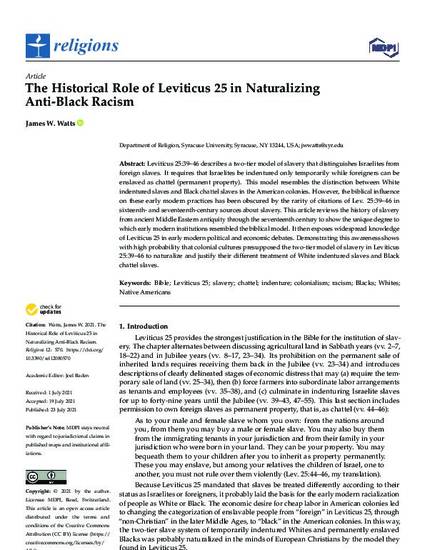
James W. Watts: 0000-0002-4872-4986
- Bible,
- Leviticus 25,
- slavery,
- chattel,
- indenture,
- colonialism,
- racism,
- Blacks,
- Whites,
- Native Americans
Leviticus 25:39–46 describes a two-tier model of slavery that distinguishes Israelites from foreign slaves. It requires that Israelites be indentured only temporarily while foreigners can be enslaved as chattel (permanent property). This model resembles the distinction between White indentured slaves and Black chattel slaves in the American colonies. However, the biblical influence on these early modern practices has been obscured by the rarity of citations of Lev. 25:39–46 in sixteenth- and seventeenth-century sources about slavery. This article reviews the history of slavery from ancient Middle Eastern antiquity through the seventeenth century to show the unique degree to which early modern institutions resembled the biblical model. It then exposes widespread knowledge of Leviticus 25 in early modern political and economic debates. Demonstrating this awareness shows with high probability that colonial cultures presupposed the two-tier model of slavery in Leviticus 25:39–46 to naturalize and justify their different treatment of White indentured slaves and Black chattel slaves.
